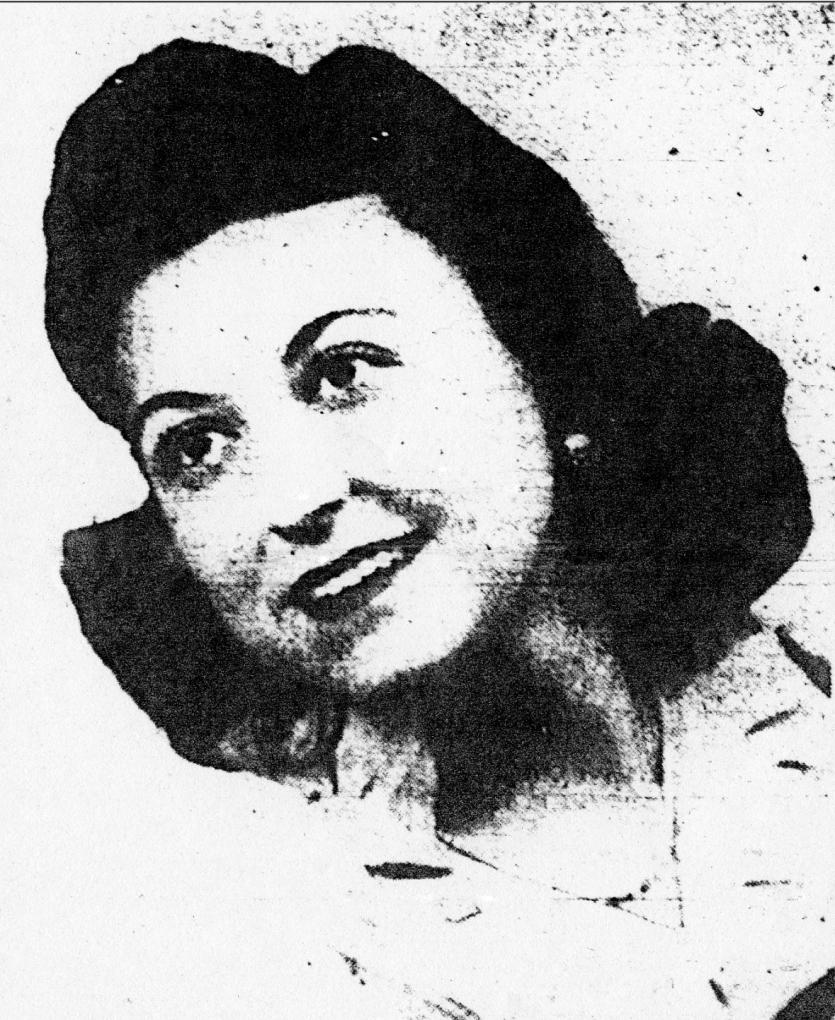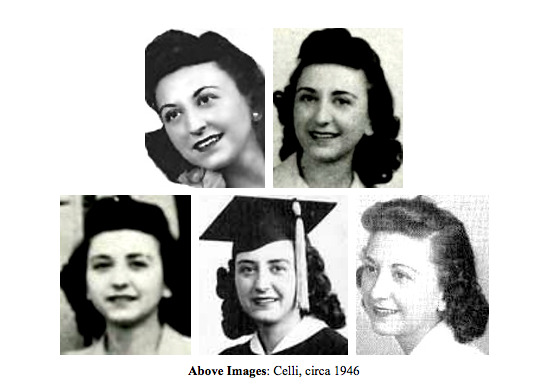One Red Shoe: The unsolved case of the high school teacher who vanished from Grandview

With many missing person’s cases come an assortment of unusual theories, unexplained coincidences and odd sightings. The story of Lola Ada Celli has all of the above and more.
At 24, Lola Celli was an intelligent, polite, well-liked home economics teacher at West Mansfield High School. She had been an honors student – both in high school and at Ohio State University, spoke five languages, rarely dated, didn’t drink or smoke and was respected by her students and fellow teachers. She rented a room from the parents of her best friend and often took the train to Columbus on weekends to visit her own parents in Grandview Heights.
Friday, February 23rd, 1946, was a holiday – Washington’s Birthday – and, as expected, Lola had decided to spend the long weekend with her parents at their home on West Third Avenue. Saturday morning, she put on a light-blue dress with red trim, her favorite, red suede shoes and a gray, lamb’s fur coat. She said she was headed to Downtown Columbus to shop for nylons, look at jewelry and find curtain fabric for her mother. Saying she would be home in time for a late lunch, Lola walked out the door with more than $60 in cash – about a week’s earnings – and headed to the nearest bus stop, just a few blocks away. Like so many other missing person’s stories, this is where the Lola Celli mystery begins.
BROUGHT TO YOU BY
When Lola didn’t return by 2, her mother became concerned. When she hadn’t arrived by 6, her younger brother, Felice, began meeting buses in the neighborhood to look for her and her parents contacted the Grandview Heights Police Department.
A neighbor of the Cellis’, 21-year-old Harry Lane, reported seeing Lola walk toward one of the neighborhood bus stops, but added that he didn’t see her on the bus when he stepped aboard just a few minutes later. Lane aroused suspicion when he gave police conflicting details about seeing Lola that day. But police weren’t sufficiently interested to pursue the matter.
At first, authorities believed Lola had suffered an amnesiac episode. Friends and co-workers came forward with information that the young teacher had experienced severe headaches and had “mused” about having amnesia. But this theory was quickly dismissed when no one reported having encountered a young woman with a loss of memory.
In the coming days, hundreds of dollars in donations poured in to support a cash reward for anyone having information about the missing woman. About 150 local high school boys were recruited to conduct a ground search, looking along the Scioto River and in the nearby rock quarries. Requests for information spread to eight nearby states.
A motorcyclist came forward to report seeing a red shoe fly out of the broken, right-side window of a red Dodge coupe, parked alongside Olentangy River Road on the day of Lola’s disappearance. He said the young couple inside appeared to be arguing. Following this lead, an employee of a nearby gas station reported a couple in a similar car pulling in for gas. He said he overheard the driver telling the woman, “Don’t say a word.” The man bought two dollars’ worth of fuel, gave the station attendant a five-dollar bill and drove off without waiting for change.
As tantalizing as the leads were, nothing more came of them. A search of the vicinity of the argument failed to turn up a red shoe. And there were no further reports of a young couple in a red Dodge coupe. The incidents did, however, give the public a name for the case – “The Red Shoe Mystery.” Lola’s parents never gave up hope that the next tip would lead to their daughter’s whereabouts. And there were plenty of “next tips.”

A ”suspicious” car was seen near O’Shaughnessy Dam, so the sheriff’s department had the nearby Twin Lakes dragged. No car. Women’s clothing was found under a bridge. They weren’t Lola’s.
Four days after the teacher’s disappearance, there were reports that she had been seen having lunch with a man in Ironton. Authorities decided to check it out because of the uncanny description of the fur coat the woman was seen wearing, which had not been reported in newspapers. Another dead end. There were various reports of a woman matching Lola’s description having been buried in nearby cemeteries or wooded areas. All of the reports were checked out; none led to the young teacher’s whereabouts.
Five months later, a Columbus newspaper received a credible-sounding call from a man who said Lola was pregnant, married and living in Circleville. Lola’s brother, Felice, went to check out the report. At first, he thought the woman was his sister; but after a few minutes, decided there was just an uncanny resemblance between the two.
Michael, Lola’s father, told police he was certain he had seen his daughter one morning while on his way to work. He said she was riding in a car on East Long Street, but that he was so excited, he neglected to write down the license plate number. Police staked out the intersection for the next week, but never saw what Michael had described.
And then, there was the bizarre. In April 1949, three years after Lola’s disappearance, a Columbus woman who had since moved to California implicated her own husband. She said that on the day of Lola’s disappearance, her husband acted strangely. She said he got angry when she mentioned the case and stormed out of the room. Not long afterward, he disappeared, too. But the story led to another dead end.
In the months following the incident, a man was digging a ditch for a septic tank in the general area of the reported argument in the car – the one in which a red shoe went flying out the right-hand window. About four feet down, the man’s pick hit a human skull. It turned out that he had discovered an entire human skeleton that had been buried in a sitting position. Police confirmed that the area had been filled with dirt about the time Lola went missing. But a coroner’s report said that, due to their age, the bones could not have been hers.
And on it went. Crank calls, mysterious letters to the parents. More leads were checked out – in Central Ohio, Chicago, Washington, D.C. and other locations. Many were tantalizing, like the report of a young woman who called herself “Lola” or “Miss Celli” working in the lingerie department of a Montgomery Ward store in Richmond, Virginia. By the time that particular lead came in, the Montgomery Ward store in question had closed. It was also determined that the store never had a lingerie department. And retail workers in the area said they had never heard the story.
In 1955, father Michael Celli died at the age of 57. Felice and Lola’s other siblings were giving up hope. But Lola’s mother, Ida, remained optimistic. And there was reason for optimism in August 1956. It was then that Marble Cliff Marshal John Guy reported that he knew where Lola was. Guy did not release any specifics, claiming that to do so would break a confidence. Guy told Mayor A. K. Pierce that Lola had her reasons for disappearing and that she was living within 300 miles of Columbus. The Celli family found the story hard to believe. Grandview’s police chief and mayor found Guy’s report credible enough to close the case. But the case was reopened just a couple of weeks later when Guy admitted he did not know where Lola was.
Lola’s mother, Ida, died in 1985, not knowing what had happened to her daughter. Siblings were left with no leads to hold onto. And though the case officially remains “open,” no one knows what happened to Lola Ada Celli, 78 years after leaving her parents’ home in Grandview to shop for hosiery, jewelry and curtain fabric in downtown Columbus.
Want to read more? Check out our print publications, (614) Magazine and Stock & Barrel. Learn where you can find free copies of our newest issues here!
BROUGHT TO YOU BY




